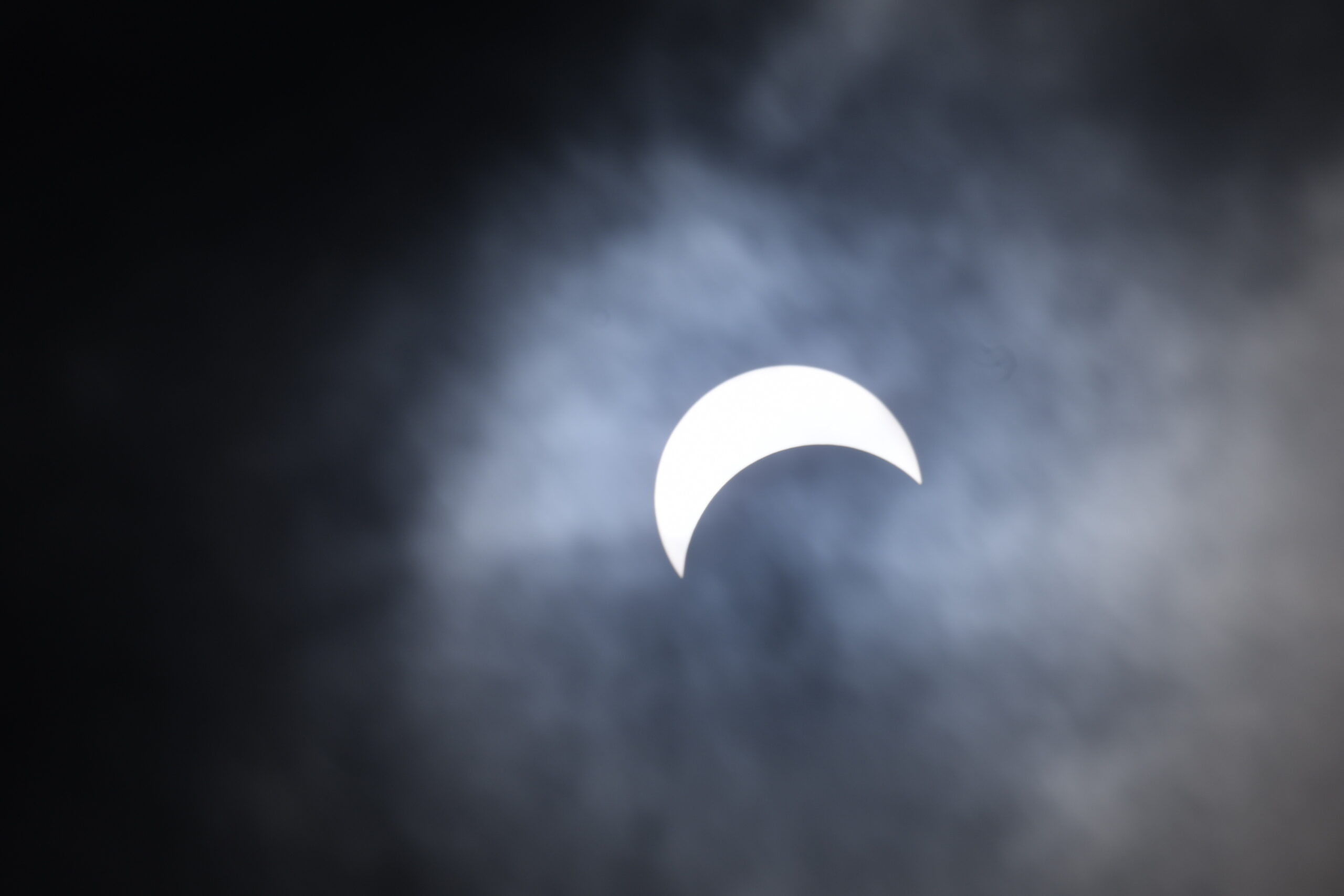Lead photo: After a tense period waiting for the sky to clear, the solar eclipse broke through the clouds over Beamsville, Ontario at 2:50 pm April 8 2024. Norm Rosen photo.
RVing in the Path of Totality – April 8 2024
Cloudy skies disperse just in time to reveal stunning images!
Story and photos by Norm Rosen
Beamsville, Ontario April 8, 2024 – You might say that I had been anticipating today’s Solar Eclipse since 1979, when a cloudy sky dampened the enthusiasm of aspiring astro photographers in Ontario. It has been a long time to wait for another opportunity to have the ultimate celestial tryst play out in the skies above central and eastern Canada.
In the weeks leading up to the eclipse, I joined millions of fascinated enthusiasts, soaking up every bit of information I could find on the internet, pouring over manuals on photography, astronomy, and folklore, preparing for what has been billed as the celestial event of a lifetime.
It was the celestial event of a lifetime…
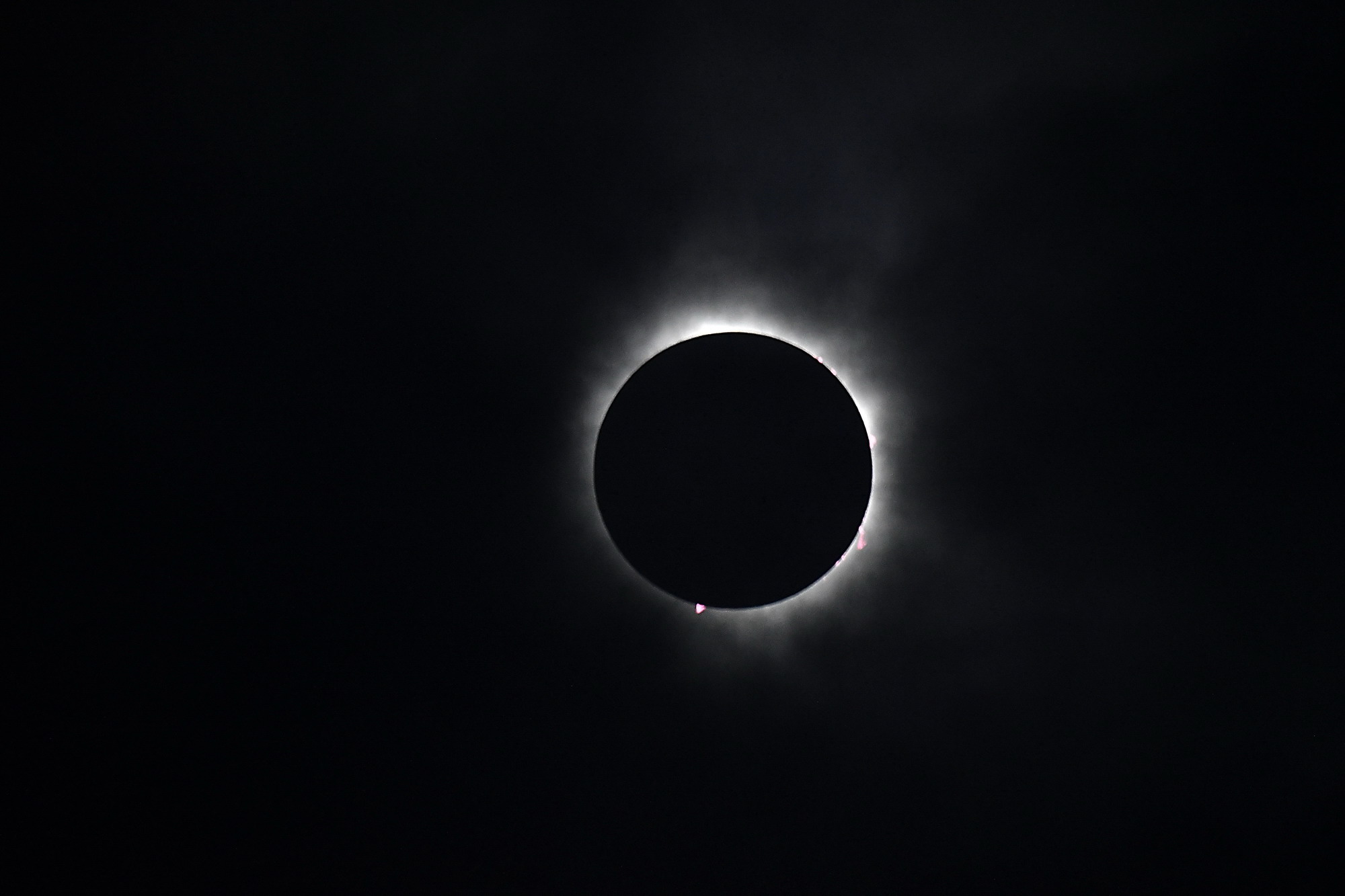
Total solar eclipses occur about every 18 months – but the incidence of an eclipse traversing your home territory is very rare… in Toronto, the eclipse of 1925 is legendary – the April 8 2024 eclipse was anticipated to match or exceed the 1925 event, and the next eclipse to pass directly over this area is scheduled for 2144.
Obviously, none of us will be here to see the 2144 eclipse, so unless you plan to join the solar eclipse world tour, today was the day to make every effort to follow the moon’s shadow.
I had originally planned to visit our friends at the Niagara Falls (Ontario) KOA, but the anticipated crowds heading for the region virtually assured traffic congestion and all the related headaches. The three-day weather forecast sounded dismal for Monday afternoon… the solar eclipse of 2024 was starting to look like a major challenge.
Eclipse Viewing Party at Outdoor Travel in Beamsville…
Just as the gloomy weather reports began to flood my social media feed, a ray of sunshine arrived in my inbox. Our friends at Outdoor Travel sent an invitation to join them and their family of customers for an eclipse viewing party at the dealership, located in Beamsville, Ontario, just a short drive from the centre of the eclipse path of totality – but a world away from the anticipated crowds.
Outdoor Travel moved into a beautiful new facility just a few years ago, and they often entertain their customers with BBQ and open house activities – with plenty of open skies surrounding the dealership, it was an ideal choice for viewing the eclipse.
A quick call to the team confirmed that there would be room for one more astro observer, so I headed off toward Beamsville, aware of the weather forecast that would make solar photography a challenge, but determined to make every effort to fulfill the dream of basking in the shadow of a total solar eclipse. The dealership had set aside a portion of their front lawn, complete with 100 chairs for their guests, and a PA system tuned to the local radio station, which was providing a play-by-play account of the eclipse as it moved through the area.
Here’s how my solar eclipse adventure unfolded…
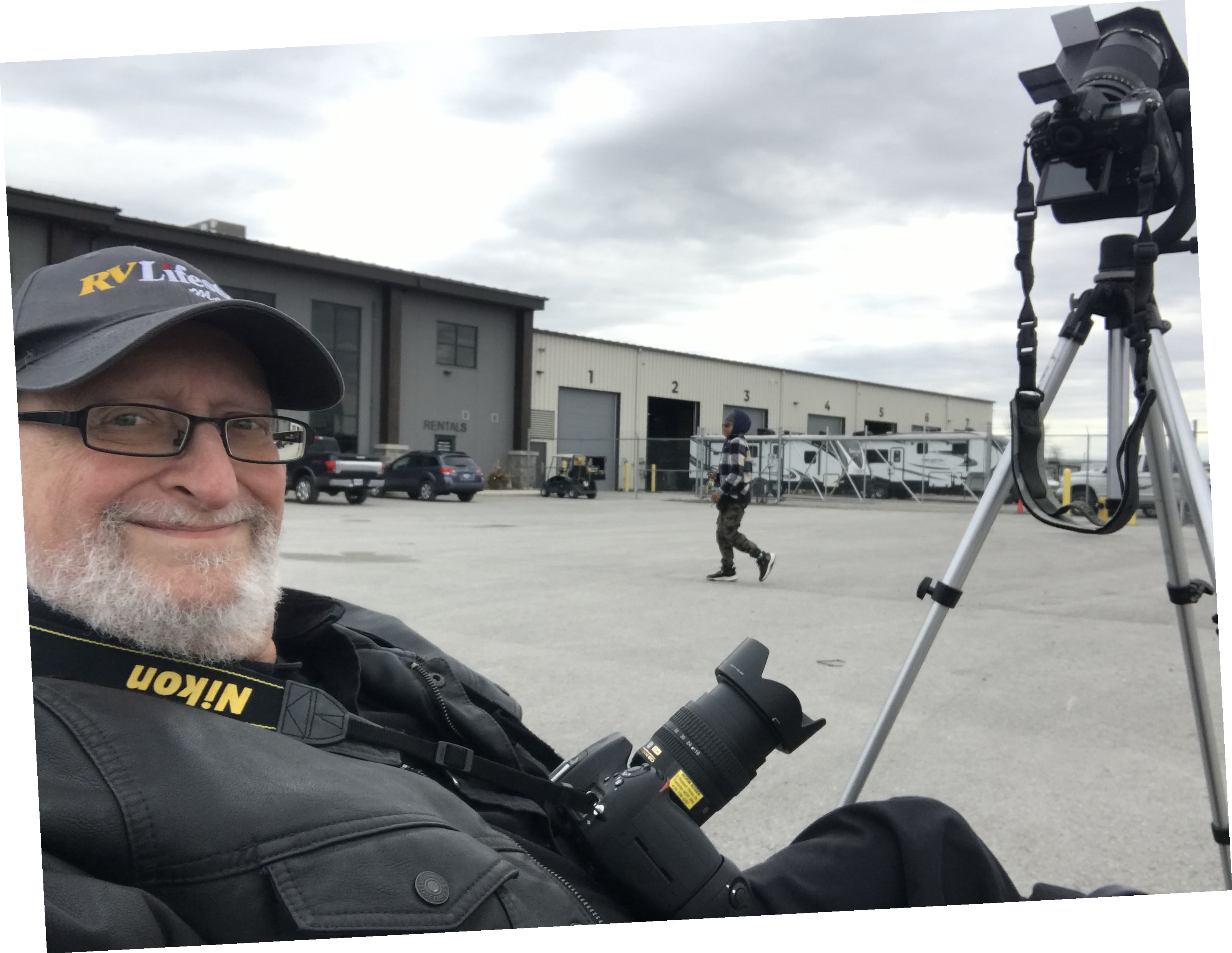
I arrived at the dealership early enough to visit the staff and customers, then I set up my camera equipment and settled into a lawn chair to wait for the action to begin. The astronomers predicted that in the Hamilton area, the partial eclipse would begin at 2:03 pm, and totality would commence at 3:18 pm and last 1 minute 47 seconds. The totality in Niagara Falls was estimated to be 3 minutes 32 seconds. Beamsville is 38km from Hamilton, and 42 km from Niagara Falls, Ontario, so I anticipated an opportunity to see about 2 minutes 30 seconds of totality. With the moon’s shadow travelling at more than 1,500 miles per hour, the start and end of the eclipse activity would be pretty much the same for Beamsville as it would be for Niagara Falls.
How do you capture a solar eclipse?
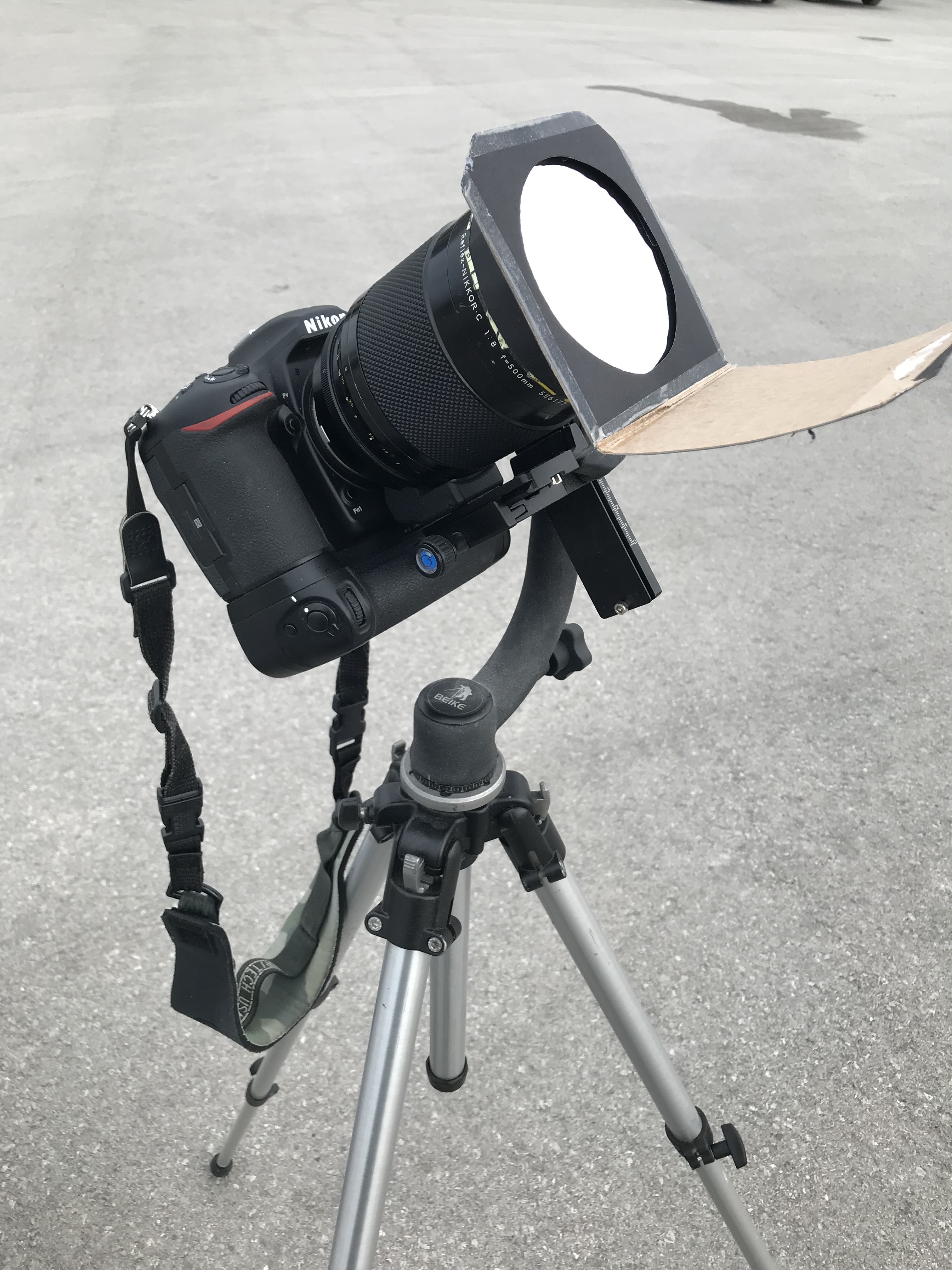
To capture the eclipse images, I selected a vintage 500mm f/8 Nikkor mirror lens, manufactured in the 1970s, and a Nikon D500 DSLR with an APS-C format sensor that renders the focal length of the lens to be equivalent to a 750mm lens on a “full frame” DSLR camera. This lens, which uses the same principle as a catadioptric telescope, is ideal for eclipse photography, providing 15X magnification. I fitted a Baader Planetarium AstroSolar Safety Film filter to the lens with a home-made filter holder. It’s not elegant, but it is functional, and it can easily be removed for shooting the “totality” phase of the eclipse where the moon completely covers the sun.
To check the lens and camera combination to achieve the ideal image size for this assignment, I had photographed the Penumbral Lunar Eclipse on March 25, 2024. The full moon filled most of the frame, so I knew that the 500mm lens would be ideal to capture the solar eclipse with the aura of the sun’s atmosphere contained within the image frame, at a pleasing magnification.
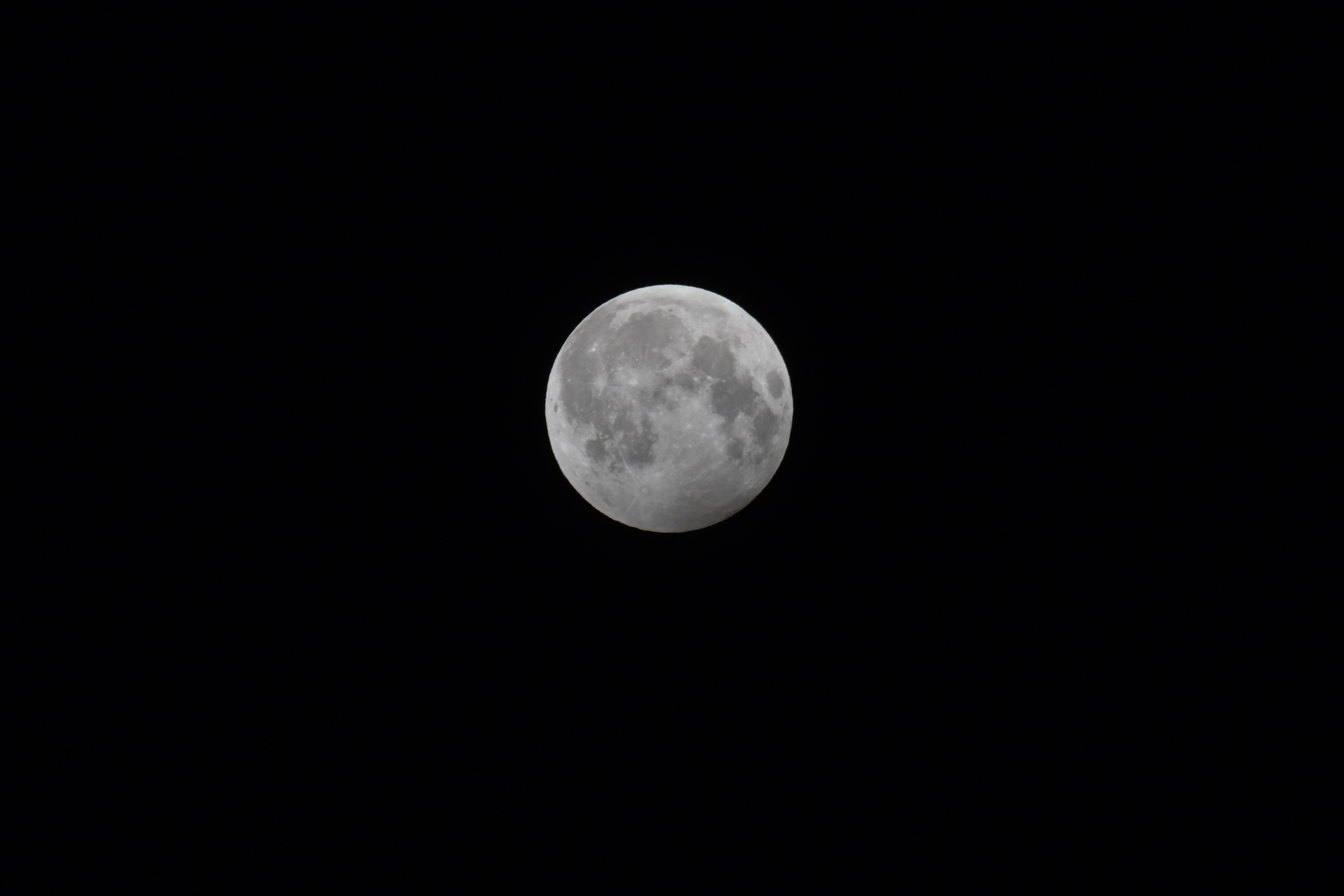
The Eclipse gets off to a cloudy start, then the skies reveal a magnificent scene…
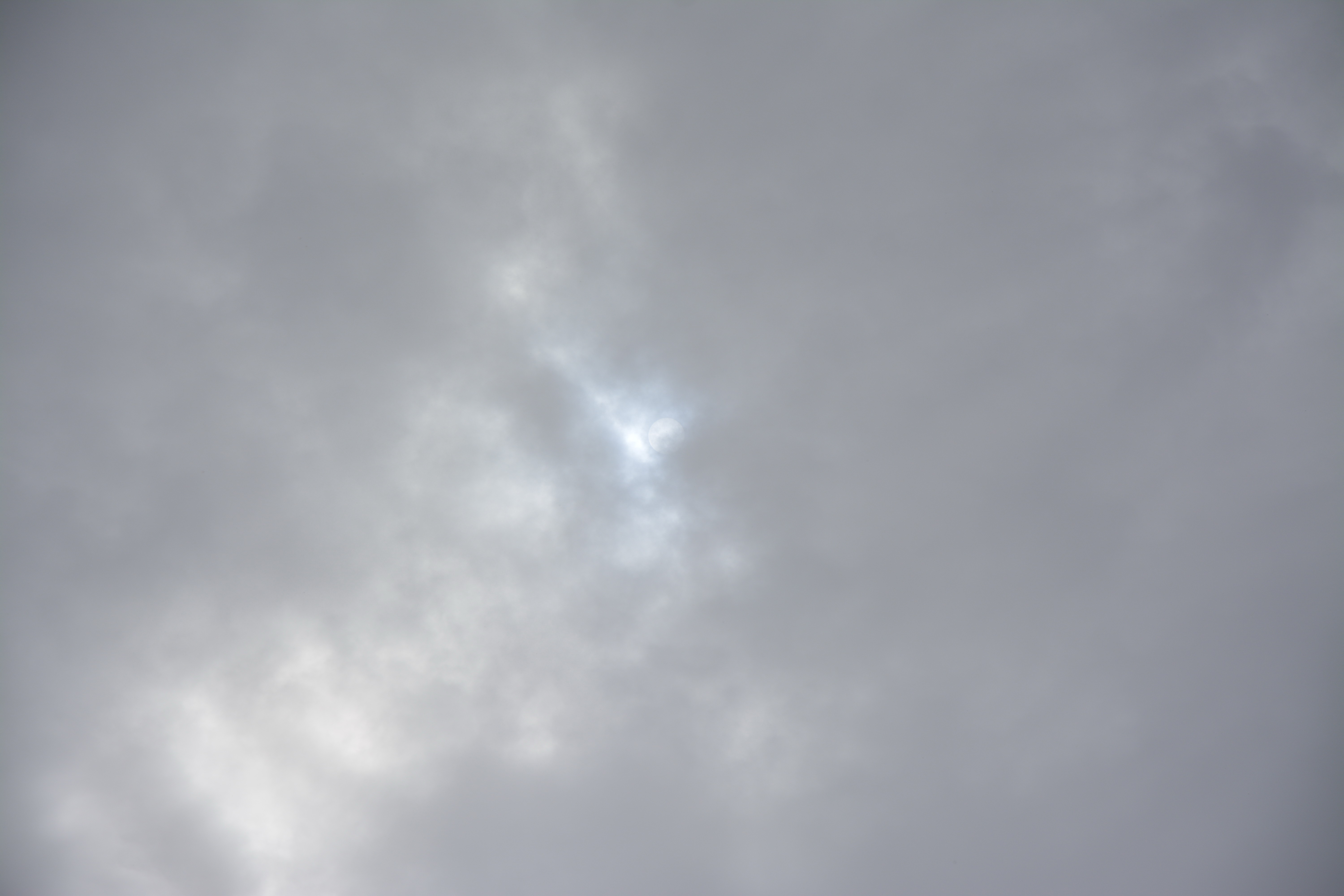
As we eagerly awaited the start of the eclipse, the clouds filled the sky. We could see the occasional break in the cloud cover, but it was obvious that the full array of the eclipse was not going to be visible. Undaunted, we kept our hopes up that there would be an opportunity to see at least part of the eclipse – and our optimism was rewarded when the sun and moon became visible just a few minutes after the start of the eclipse.
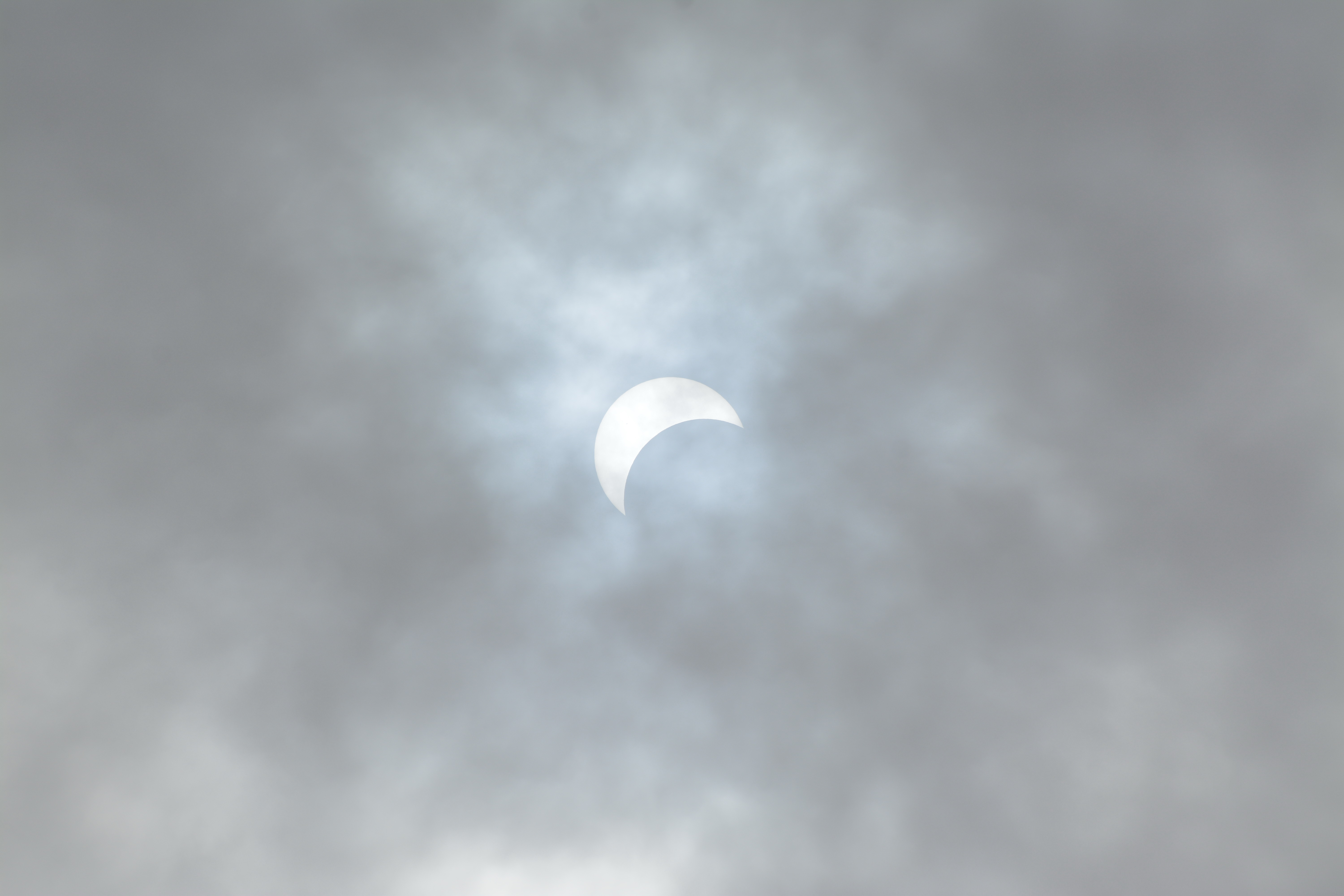
Totality minus 20 minutes… Time to get cracking in order to photograph the highlights of the eclipse!
I had been shooting the sky with a 70-300mm lens on a Nikon D7100 DSLR, trying to find the sun so I could have an opportunity to use the long telephoto lens on my main camera. When the clouds parted just enough to see the eclipse, I shifted my attention to the D500 camera with the 500mm lens, which was fitted with the Baader Planetarium AstroSolar Safety Film filter.
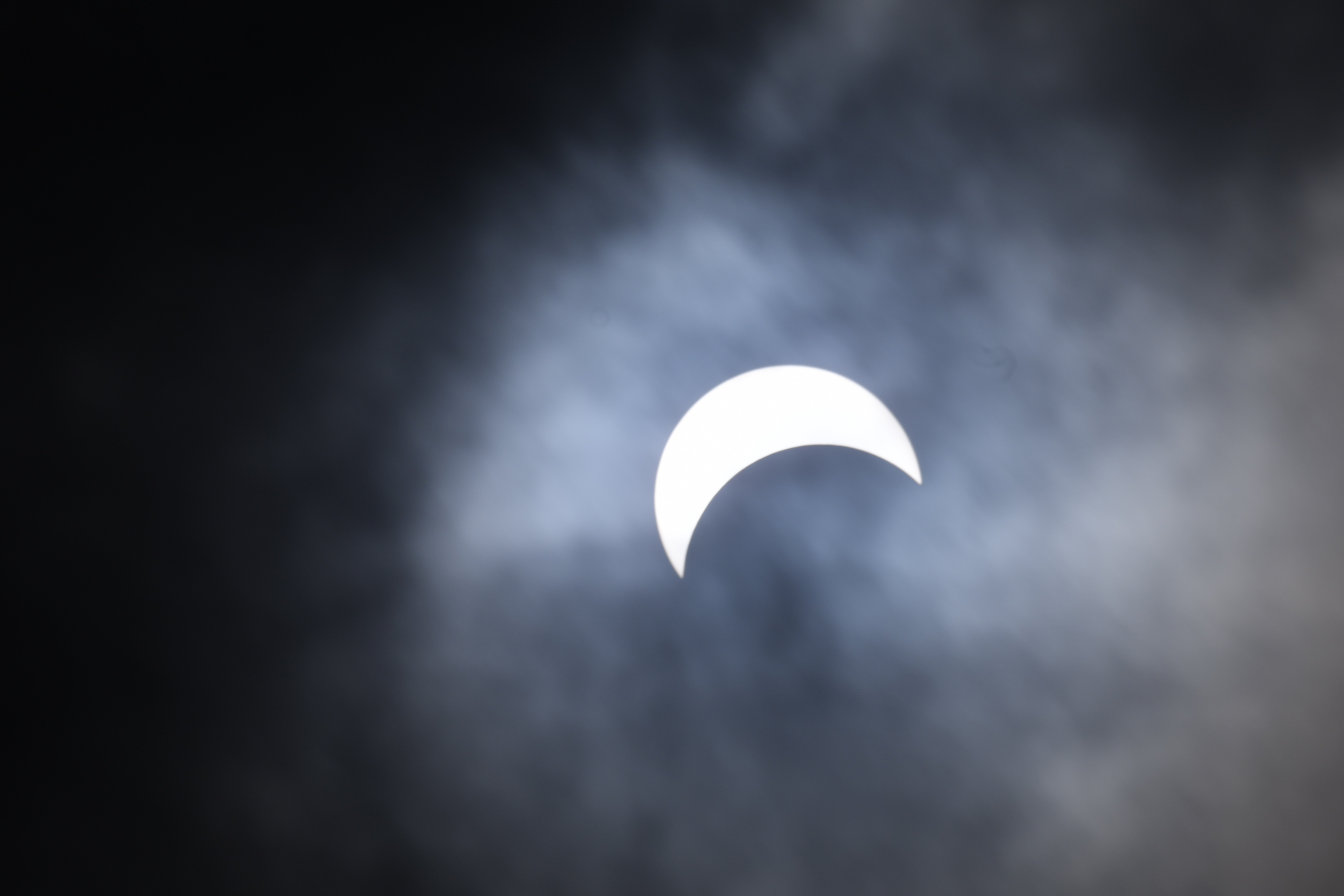
3:03 pm – Every few minutes, the moon eclipsed more of the sun…
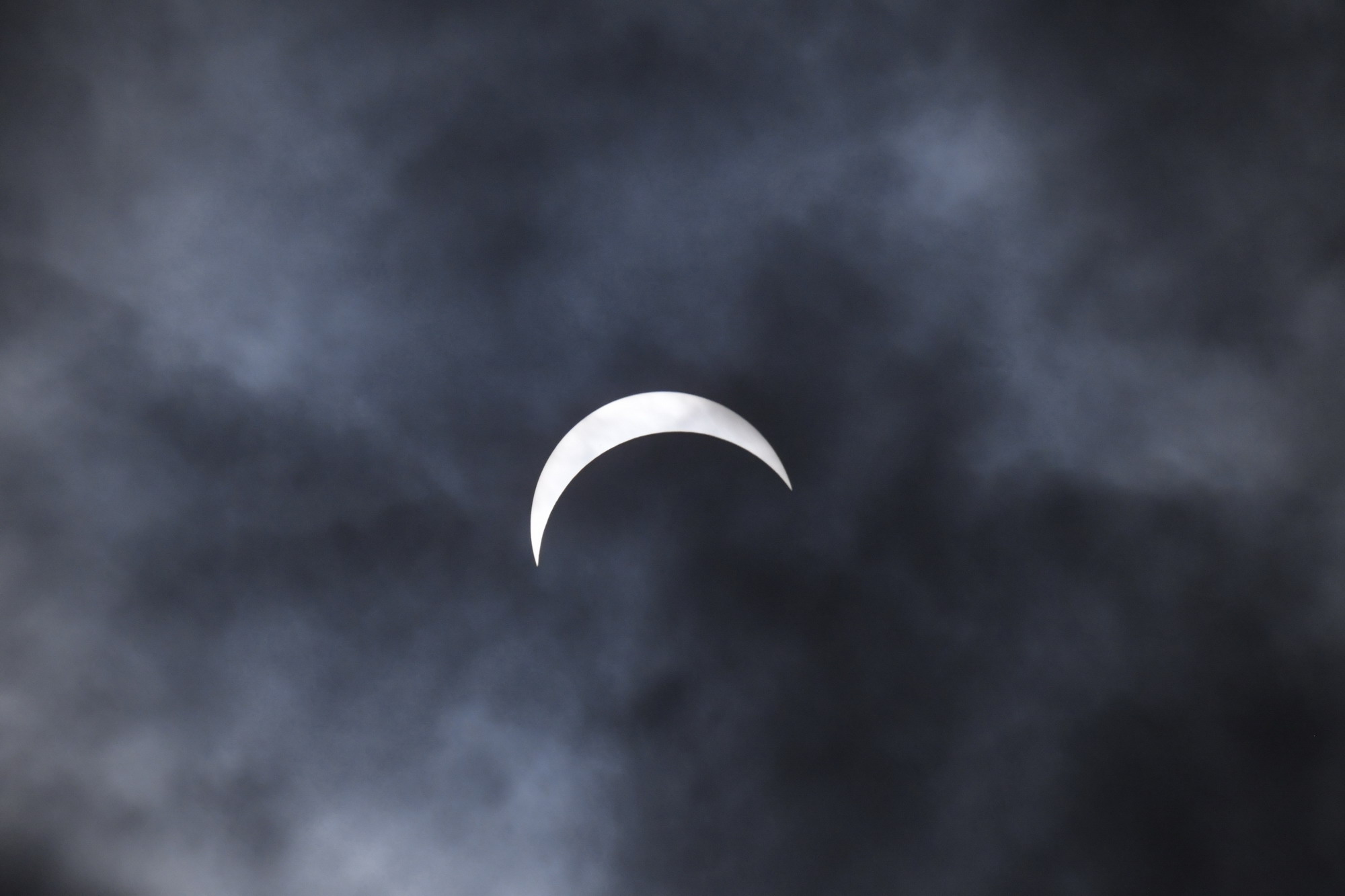
While the moon transited the face of the sun, the celestial dance passed in and out of the cloud cover. While I had hoped to capture scenes every few minutes on a regular schedule, I was happy to be able to shoot whenever the clouds parted – so the best images were not exactly spaced across the chronological sequence, but it was much better than we expected based on the dense cloud cover that obscured the early phase of the eclipse.
Once the action began, the moon passed quite quickly over the sun, and at 3:18 pm totality was observed – right on schedule.
3:18 pm – Right on schedule, the clouds parted to reveal the total impact of the eclipse…
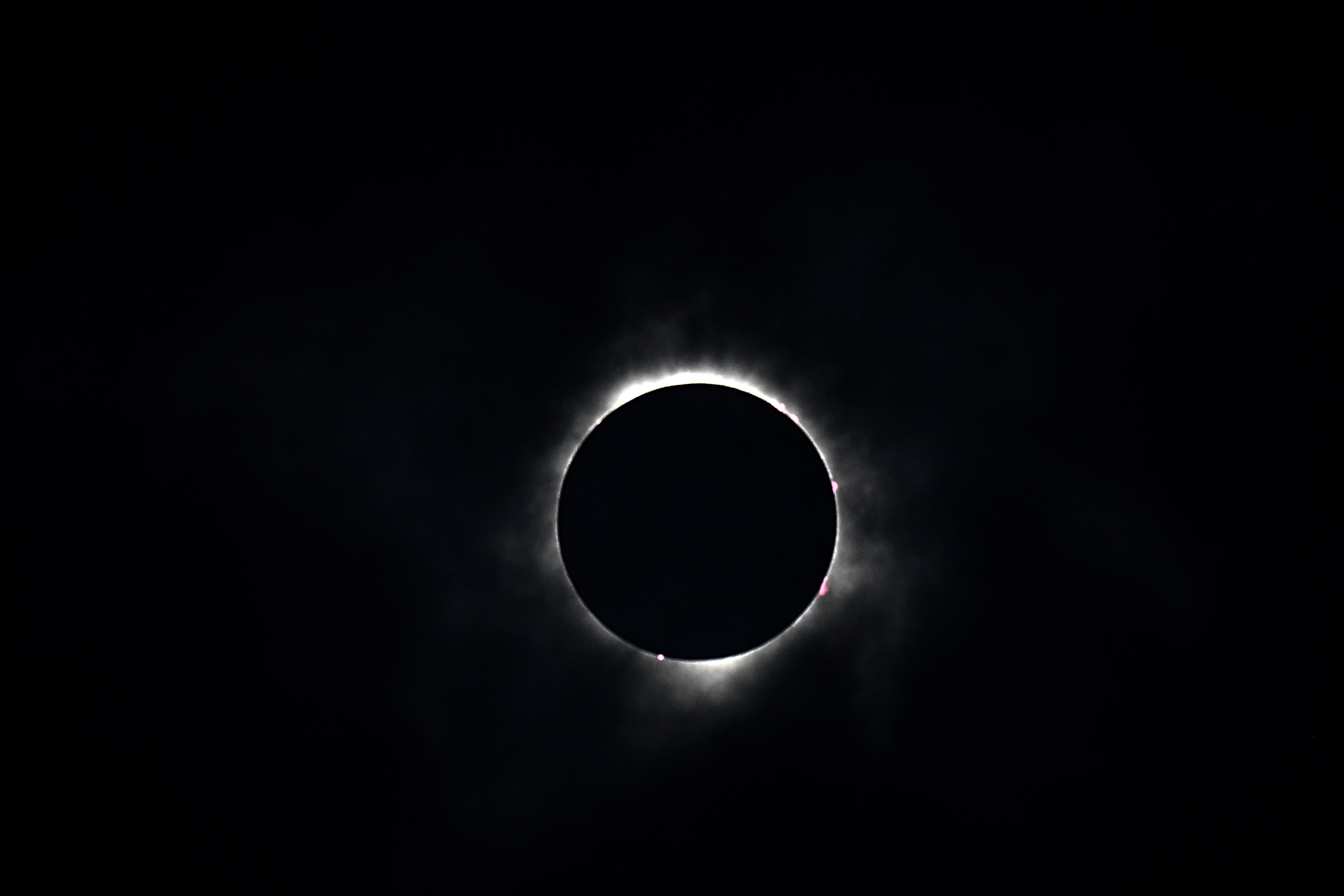
In a matter of minutes, the totality phase ended, and the moon passed over the upper quadrant of the sun…
The various stages of the final phase of the eclipse were clearly visible, with the added interest of clouds surrounding but not obscuring the scene.
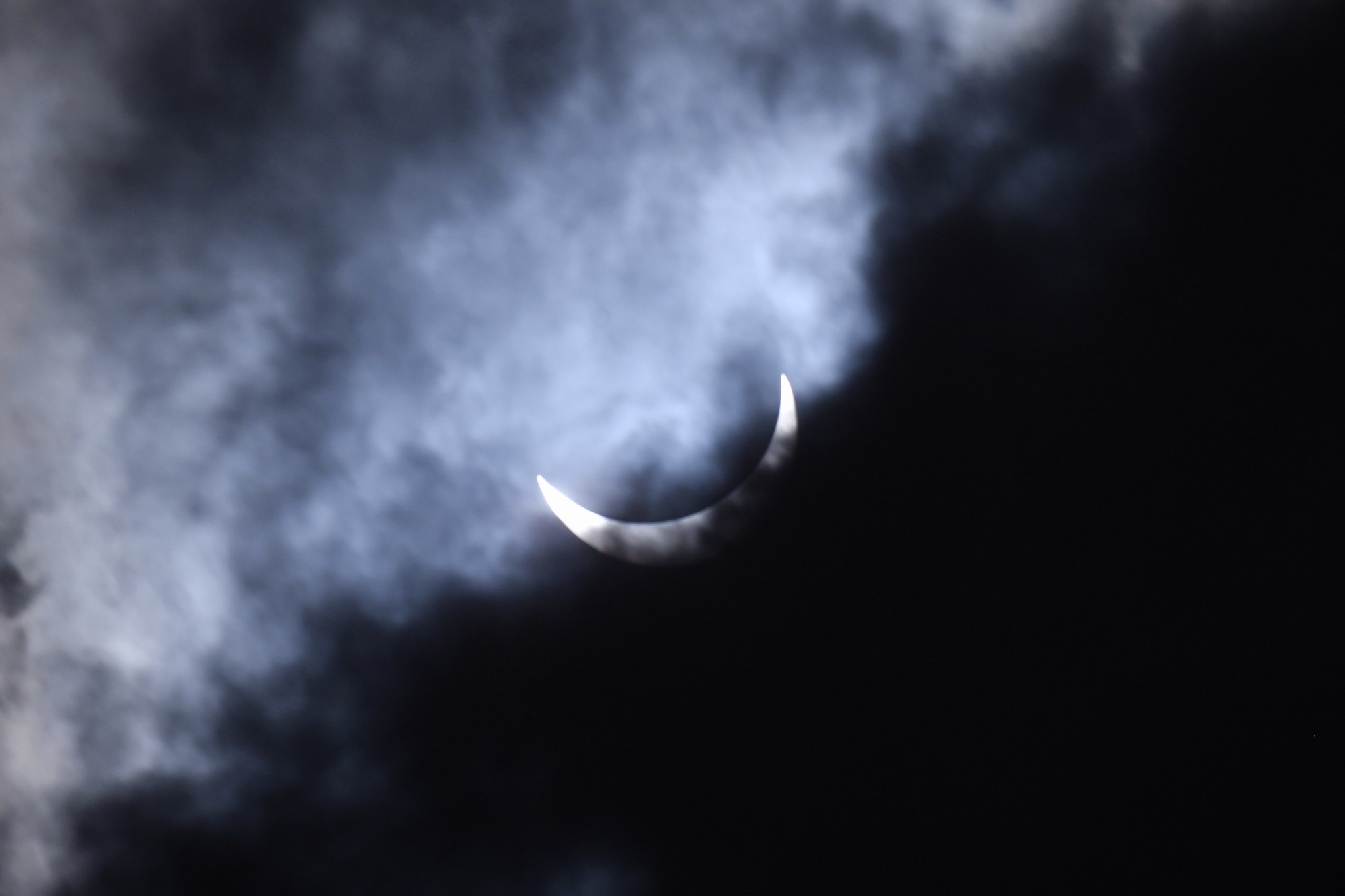
The skies transformed from daylight to dusk, and full night mode… then returned to normal – all in a matter of minutes!
As the eclipse raced through the 2 minutes or so of totality, I snapped a few images of the surrounding area to show how the moon’s shadow turned day into night, and then faded away to let the sunshine return.
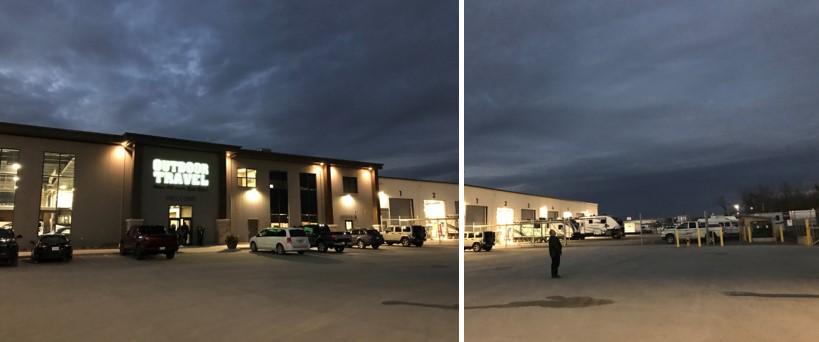
It was noticeably cooler during the period of totality than it had been prior to the eclipse, and it was nice to feel the warmth of the sun return as the moon’s shadow raced along the path of totality to fascinate observers throughout the northeast states and provinces. By 3:30 pm, the sunlight had returned to full strength, and the air warmed up to once again become a very comfortable spring day. Within an hour of the eclipse, the sky was blue and there was barely a cloud in sight.
Why do my photos show the sun’s light as white, while many internet images show the sun as orange? It’s a matter of the filtration – I used a special “AstroSolar” filter material produced by Baader Planetarium in Germany. This filtration is calibrated to portray the accurate colour of the sun, and is intended for solar observation and photography with all high-end telescopes and extreme telephoto lenses. Most of the photographic ND (neutral density) filters sold to darken images are intended for terrestrial photography – they are useful when you want to use very slow shutter speeds to depict movement, as in waterfall images and traffic patterns on a highway, but these filters are not intended for solar photography, as they do not portray the accurate solar colour rendition. The AstroSolar filtration material is a premium alternative used within the astrophotography sector.
Why did I select a 50-year old manual focus lens? Five reasons: first, it is a very high quality optic that is compact enough to handle in a wide range of photographic situations; second, the eclipse did not require a modern autofocus lens, which would have been used in manual focus mode in any case; third, the benefit of a “prime” lens (a single focal length lens) over a zoom lens for astro photography is that the fewer lens elements, the less likely there will be chromatic aberrations or optical distortion in the images; fourth, the extremely shallow depth of focus at long telephoto focal lengths makes focusing extremely critical – the 500mm Reflex Nikkor was designed to provide very fine focus control – ideal for astronomical assignments; fifth, the f/8 fixed aperture provides a reasonable compromise between light transmission and depth of focus – the modern long telephoto lenses, both zoom and prime lens varieties, have larger maximum aperture settings, which make them very challenging to use in this type of situation, compared to the older fixed focal length lenses with smaller maximum apertures and manual focus. That’s why I only used the 70-300mm zoom to locate the sun, and then switched to the 500mm lens for the key images.
A final note on the photographs…
Most photographs of the solar eclipse that you will see on social media or websites are moderately to heavily modified in post-processing – I don’t work this way – my photos are presented very close to “straight out of the camera” – you can do this when you have the experience to capture accurate images without the need to manipulate the photos.
Was I glad that I had taken the time and made the effort to experience the solar eclipse? Absolutely!
I hope you have enjoyed these images as much as I have enjoyed bringing them to you.
Many thanks to the team at Outdoor Travel in Beamsville, Ontario, for their hospitality.
This year marks Outdoor Travel’s 30th anniversary – it’s a beautiful facility, with several very cool classic cars interspersed among the new RVs in the showroom, and one of the best parts and accessory shops in the region.
Check out the latest 2024 models and the full array of gently used RVs at the Outdoor Travel website: https://www.rvvacations.com/


















